Thirty million years ago, volcanoes began to erupt in what is now Piute County. For 25 million years, volcanoes exploded or oozed every now and then—laying down 10,000 feet of volcanic rock. The Tushar Mountains, which rise up at the west of the county, are volcanic rock.

These mountains are the highest part of the High Plateaus section of the Colorado Plateau. During the volcanic era, hot solutions of minerals such as silver, gold, copper, mercury, and iron flowed into cracks in the rocks—leaving behind rich ore veins.
At the east of the county lie the Parker Range, and the Sevier Plateau extends into the middle of the county. On either side of that plateau two main streams flow: the Sevier River and Otter Creek. They are now dammed to form Piute and Otter Creek reservoirs.
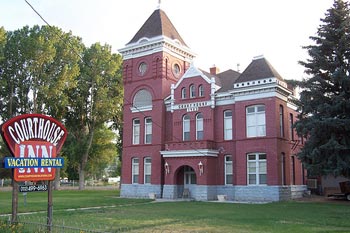
First Peoples
A Paleoindian site tens of thousands of years old has been found in the sagebrush north of Circleville. It looks like it might be a settlement, rather than a temporary camp—which is a rare kind of Paleoindian site indeed. But it needs more archaeological study.
Eight thousand years ago the Archaic people moved through and lived in Sevier County. Nearby, in Sevier County, archaeologists have studied an Archaic site sheltered under a cliff. In this site, the people roasted plant foods and meat, and used the site for about 350 years.
Archaeologists have also found and studied sites in Piute County. They have learned that people didn’t settle in one place; instead, they might hunt in the mountains in summer and come to the valleys to gather plant foods in the fall. They used more than 40 plant species for food.
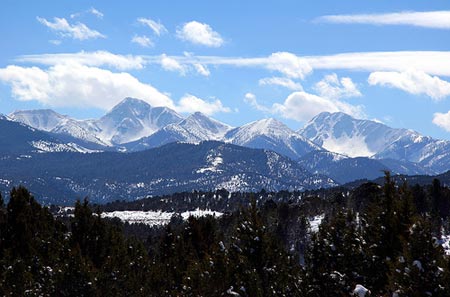
A thousand years ago the Fremont culture emerged. These people grew corn, beans, and squash and lived in villages. But they also moved around to hunt and gather food.
Before farmers plowed and cultivated fields, there were many Fremont mounds in Piute County. In 1880, one was left near Marysvale—3 feet high, 88 feet long, and 72 feet wide. The mounds covered Fremont villages.
Probably before the Fremont left about 750 years ago, ancestors of today’s Paiutes and Utes moved in. Skilled at gathering foods—instead of growing them—the Paiute moved around in small bands. They lived successfully in a pretty harsh landscape. Utes acquired horses from the Spanish and became skilled at using horses for hunting, raiding, and trading.
History
The Old Spanish Trail ran through Piute County. Spanish and Mexican trading parties used the trail to trade guns, blankets, and horses for furs and slaves with Indigenous peoples.
American trappers also passed through, including William Wolfskill and George Yount, who were the first we know to travel the length of the Old Spanish Trail. Kit Carson and John C. Fremont came through. So did Mormon explorers.
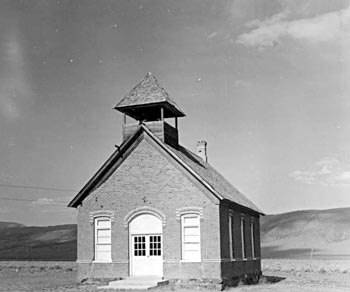
Settlers
Looking for land for grazing and farming, in 1864 groups of pioneers from Ephraim traveled down to settle Circleville and Junction.
There they found a few challenges. Oluf Larsen wrote that the wind blew all the time at Circleville. Whenever they cooked or made coffee, they would get “dust and sand in everything.”
When the settlers tried to irrigate, the water often disappeared into the porous soil and gopher holes and bubbled up through the holes in another field. The settlers had a tough time keeping their fields watered.
The Sevier Valley did provide good grazing, and livestock remains important to the economy. Wild hay, alfalfa, grain, and pastures provide feed for the limited beef and dairy production. Earth-covered potato cellars remain as evidence of a successful crop in an earlier era.
The Sevier Valley did provide good grazing, and livestock remains important to the economy. Wild hay, alfalfa, grain, and pastures provide feed for the limited beef and dairy production. Earth-covered potato cellars remain as evidence of a successful crop in an earlier era.
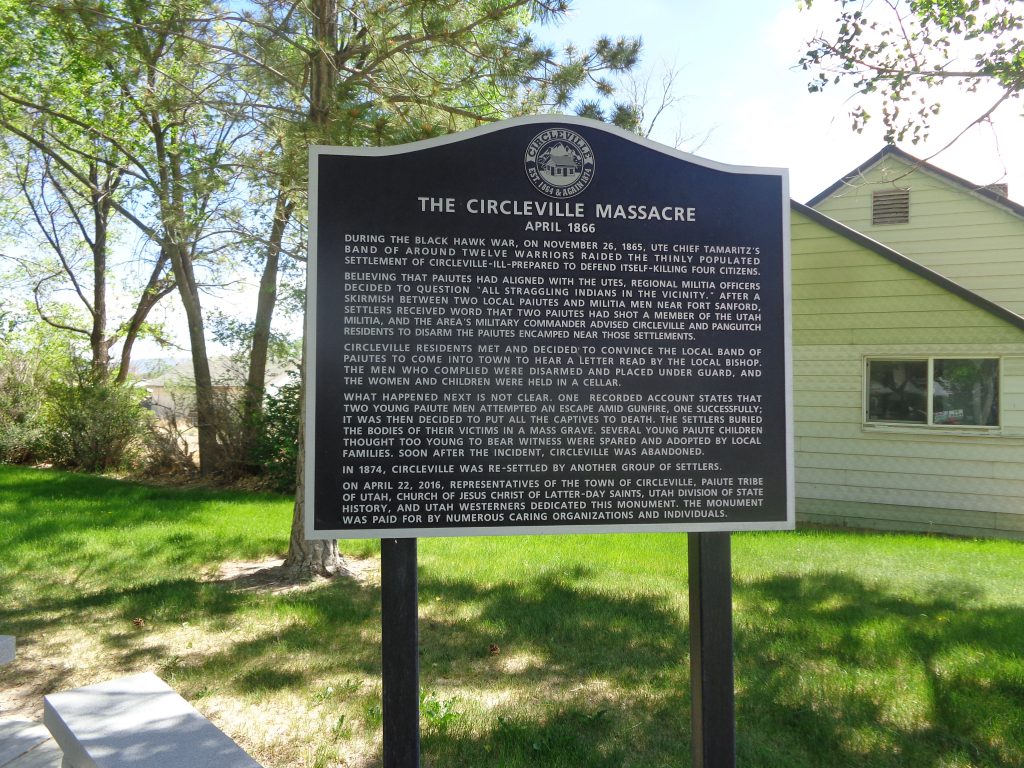
Circleville Massacre
During the Black Hawk War, settlers “arrested” around 30 peaceable Paiute Indians and imprisoned them in the cellar of the church at Circleville. In the hysteria of war, the settlers lost their reason and humanity and killed the men, women, and children, sparing only a few of the youngest children. This atrocity has not been widely known or acknowledged, but a monument in Circleville spearheaded by the Paiute Tribe commemorating the massacre was placed in 2016 and has brought more attention to the sad event.
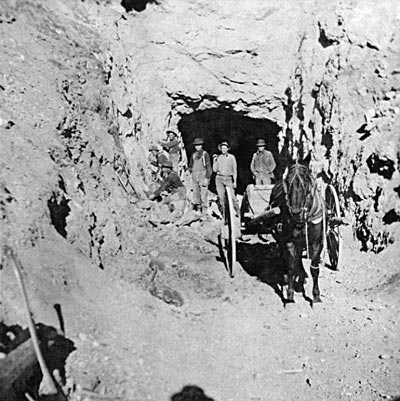
Economy
Earth’s riches once really fueled the economy. A gold and silver boom in the Tushars spawned such towns as Bullion, Kimberly, and Marysvale. Miners organized the Ohio Mining District in 1868, and by 1872 Bullion Canyon boasted 50 buildings and hundreds of eager miners.
Kimberly, in the Gold Mountain District, developed around the rich Annie Laurie claim, located in 1891. The completion of a Denver and Rio Grande Railroad branch line to Marysvale in 1900 linked Piute’s mines and farms to the marketplace.
Later, mines produced lead, zinc, alunite, and uranium. Piute’s huge reserves of high-grade alunite ores were especially important during World Wars I and II. Mining, now in a bust mode, could boom again.

Today, the Piute School District employs around 50 residents. Less obvious contributors to the local economy are a few retirees who have moved to the larger towns. As in most of Utah’s rural counties, “home” has a strong pull on local residents, while economic forces tend to push recent high school graduates toward the opportunities of urban areas. Piute residents depend on nearby Richfield north on Highway 89 for major services.
Recreational activities also create some job opportunities. Piute and Otter Creek reservoirs provide good boating, water skiing, and fishing. Tourists also like to visit the Parker ranch just south of Circleville because of its association with outlaw Butch Cassidy.
Did You Know?
| Piute has attracted prospectors and miners for gold, mercury, silver, and uranium. |
| A family-based United Order formed at Kingston in 1877 lasted until 1883. |
| Butch Cassidy moved here in 1879 at age 13 and met the man who taught him how to steal cattle. |
| Otter Creek and Piute reservoirs lie in the county. |
| Marie Bertelsen, born in Marysvale, was a Days of ‘47 Queen and went on to star in 150 movies as Marie Windsor. |
Fast Facts
Area: 754 Square Miles
County Seat: Junction
How it Got its Name: Paiute Indians
Main Towns: Circleville, Marysvale, Junction
Economy: Agriculture, Beef, Dairy Cattle, Education
Keep Exploring!
Return to the County’s home page here.
Return to the I Love Utah History home page here.